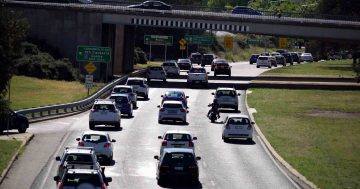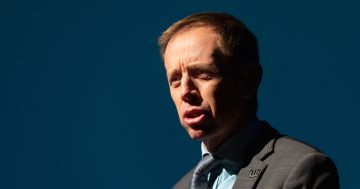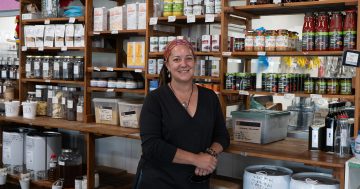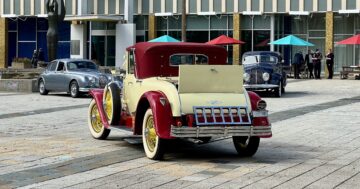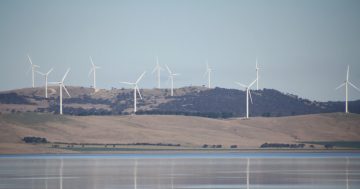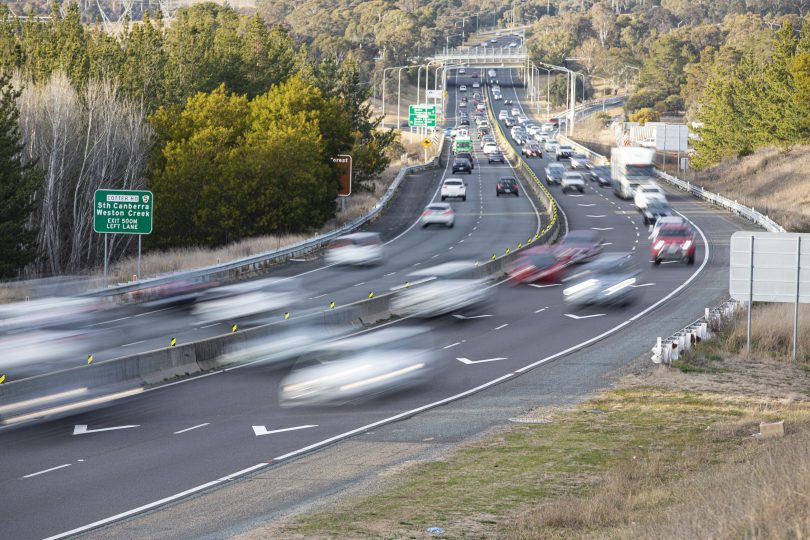
Mr Rattenbury said the Canberra community needs to start re-thinking transport and be willing to leave the car at home. Photo: File.
Canberrans are being encouraged to ditch their cars one day a week and jump on public transport or a bike as the ACT Government aims to reach its zero net emissions target by 2045.
Chief Minister Andrew Barr and Minister for Climate Change and Sustainability Shane Rattenbury launched the ACT Climate Change Strategy 2019-2025 today, outlining the Government’s plan to reduce greenhouse gas emissions by 50-60 per cent by 2025.
As part of the strategy, the Government said it will provide “incentives” for Canberrans to consider active travel or public transport to move around our city, with transport accounting for more than 60 per cent of emissions.
The strategy recommends the Government implements car-free days, car-free areas, shared zones and traffic-calmed streets as soon as 2021, as well as options for a reward scheme for locals who increase their use of public transport.
The strategy said car-free days have been implemented in hundreds of cities around the world, noting Paris makes its central areas car-free on the first Sunday of every month.
“Government will work toward holding car-free days at least once per year,” the strategy said. “These could be held to coincide with on-street activities such as markets and festivals.”
The strategy also said the ACT Government should consider reforming car registrations fees based on how often and far the car is driven to “incentivise efficient road use”.
Mr Rattenbury said the Canberra community needs to start re-thinking transport and be willing to leave the car at home and walk or ride a bike, e-bike or use public transport for their daily commutes. He said if one Canberran decided to leave their car at home and walk or cycle once per week, emissions would be reduced by around 400 kilograms each year.
“I think we have an imperative to make these changes because we have to do that for the community,” Mr Rattenbury said. “If we don’t and the impacts of climate change are unmitigated, then people’s lives will change for the worse whether they like it or not.”
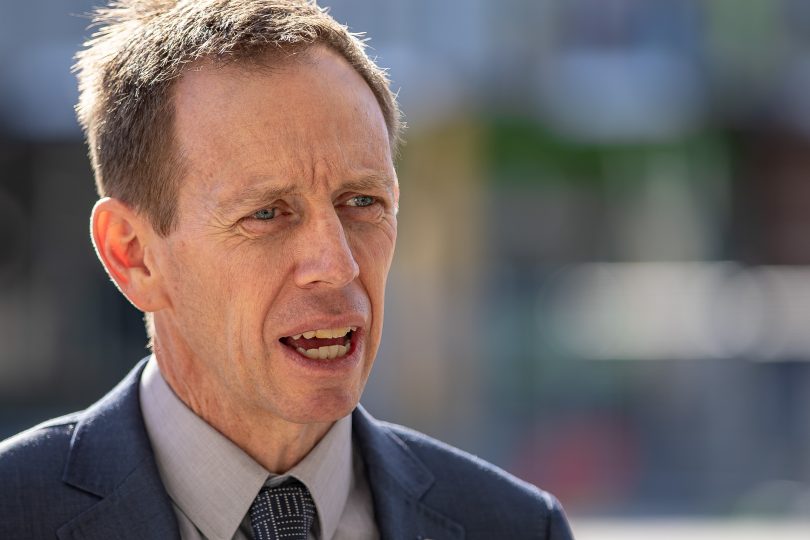
“We need to ‘Copenhagenise’ Canberra” – Mr Rattenbury. File Photo.
Mr Rattenbury admitted that the strategy requires Canberrans to make behavioural changes and said there is a “need to ‘Copenhagenise’ Canberra”.
“We want to work with our community to start early and to make the transition as easy as possible,” he said.
“We need to make it better for walking and cycling in this city. That means the Government needs to invest in the infrastructure to make it easier for people but we also need to show them what is possible.”
Mr Rattenbury said reducing emissions from transport is a high priority for the Government and presents one of the biggest challenges in meeting the 2025 target, and achieving net-zero emissions in the longer term.
“Responding to this challenge will require fundamental changes in how we plan and deliver transport networks and how we choose to travel,” Mr Rattenbury said. “It is not possible for the Government to achieve the ACT’s emission reduction targets alone.
“The Government will play its part in supporting and encouraging individual choices and technologies that reduce transport emissions, but will also seek the participation of the community in rising to this challenge.”
The Chief Minister said the next few ACT Budgets will help fight climate change by funding new projects and infrastructure.
“It won’t all happen at once and we are stepping through a process here,” Mr Barr said. “There are parts of Canberra that are arguably quite Copenhagen-like already but there is more work that can be done.
“I think there is an appetite in the broader Canberra community for this sort of partnership approach. There is certainly a lot of distress at a national level, so rightly there is a focus on state, territory and local governments to show some leadership and to work with their local communities.
“That is what we are doing.”
Conservation Council ACT executive director Helen Oakey said the ACT Government’s “bold ideas” for rethinking transport will trigger a fundamental rethink on efficient use of roads.
“Reducing emissions from transport will require specific targets, community engagement and investment over a long period of time to ensure that active travel and public transport options are efficient and reliable, as well as safe and enjoyable for people,” Ms Oakey said.
“While electric vehicles will definitely have a role in our transport future, this transition to zero emissions transport is a wonderful opportunity to reduce the number of private vehicles on our roads, something that will be important as the population grows and our city becomes denser,” she said.












